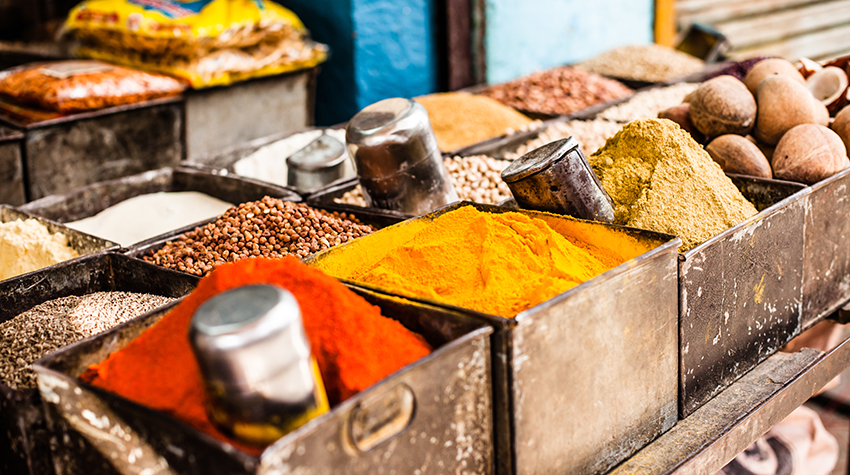It’s Trending: What You Need To Know About African Cuisine
Published on: 04/16/2018 in Culinary Trends
Published on: 04/16/2018 in Culinary Trends

As the economy has gone global, so too have consumer tastes. Known as a cultural melting pot, America has historically served up a broad spectrum of internationally inspired cuisine. According to NRA, 80 percent of consumers eat at least one ethnic cuisine per month while 17 percent of consumers eat seven or more ethnic cuisines on a monthly basis.1 Among the most common ethnic dishes are Italian, Mexican and Chinese with Ethiopian, Brazilian, Argentinian and Korean cuisines becoming more popular.1 However, you might be surprised to see the biggest flavor trends originate in Africa. Relatively under-explored in the United States, African flavors and ingredients are expected to pop up on menus across the country.2
Since Africa is the second-largest continent in the world, simply saying “African cuisine” may come across as vague. After taking a closer look at the diverse regions throughout Africa, you’ll soon find an array of techniques and rich, earthy flavors that can easily be incorporated into your existing menu. It’s a matter of narrowing your focus and finding the right region or country for your inspiration. For example, Chicken Mwamba is a popular dish across the Congo and is often served as a soup or as an entrée. While the name sounds exotic, the rich flavors of the dish actually come from peanut butter and therefore may be more approachable for your customers. Poached chicken is cooked in a sauce of sautéed onion, garlic, hot peppers, tomato paste and peanut butter and is served as is for a hearty entrée or added to chicken stock to make a spicy peanut chicken soup.3
Another familiar dish comes from South Africa where fish is often steamed in banana or plantain leaves with onion, lemon and wine. Not only does this cooking method intensify the flavors of the dish, but it also creates a beautiful presentation. Many chefs might be surprised to learn that the South African national dish, Bobotie, is reminiscent of Shepard Pie, with the exception of potatoes. Instead, Bobotie features ground beef and lamb browned with onions, garlic, curry, turmeric, chopped apricots, apples, raisins, and almonds along with the zest of a lemon and a beaten egg to hold it all together.4 Meanwhile, North African cuisine blends African with Middle Eastern and Asian influences. One spice, cardamom, is used across Africa but comes into play with heavy prominence in North Africa where its earthy flavor adds to the fragrant mix of the cooking.5
These are just a few examples of the diverse flavors and unique dishes found throughout Africa. While you may not feel comfortable introducing exact dishes on your menu, there are countless ways you can take inspiration from these flavorful foods. For example, the African peri peri pepper has become more common as Nando’s Chicken chain expands in the United States. Nando’s focuses on authentic, fresh food inspired by South African and Portuguese flavors and has become famous for its flame-grilled, butterfly-cut chicken, which is marinated for 24 hours before being basted and cooked in its secret peri peri sauce.6
Whether you simply want to highlight a few traditional ingredients or recreate authentic dishes, the vast continent of Africa offers a diverse range of ingredients, flavors and techniques to inspire your next dish. Don’t be afraid to get creative as more Americans express their desire for exotic flavors from around the globe.
1 National Restaurant Association, “Global Palates: Ethnic Cuisines and Flavors in America,” 2015
2 National Restaurant Association, “What’s Hot: Top 10 Food Trends for 2017,” 12/8/16
3 Food Centric, “2017 Food Trends: The Flavors of Africa, Part 1,” 1/3/17
4 Food Centric, “2017 Food Trends: The Flavors of Africa, Part 3, Southern Shores,” 1/20/17
5 Food Centric, “2017 Food Trends: The Flavors of Africa, Part 2, North Africa,” 1/10/17
6 Foodservice Equipment & Supples, “Trend: African Food,” 3/1/16